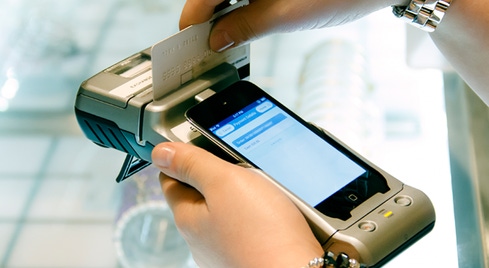Designing a mobile app that solves real business problems requires a four-step approach. Here's how jeweler Alex and Ani did it.

Anybody can make an app. And that's the problem. People in companies set out to build apps, only to realize they're not building an app that helps the company be more successful.
The key is to build an app that's connected in a meaningful way to the systems that power the business. It takes a disciplined, four-step approach that we at Forrester call the IDEA cycle.
We'll show you how this works with an example from the high-end jewelry retailer Alex and Ani, looking at the application that employees in the stores use to help customers make choices and then complete the purchase transaction.
1. Identify
The first step in the IDEA cycle is to identify the mobile moments and the context. A mobile moment is a point in time and space when someone pulls out a mobile device to get something done. Your customers have them. Your employees have them. And if you're building an application, you must start, not with systems, not with your website, but with mobile moments.
[InterContinental Hotel Group's mobile app hinges on product and developer teams. Read IHG Builds Hotel App The Agile Way]
Only by thinking in terms of mobile moments can you create an application that really solves the customer's (or employee's) problem.
At Alex and Ani, CTO Joe Lezon, and Susan Soares, head of retail operations, mapped out the moments in which employees interact with customers. Then they catalogued the context – the situation, preferences, and attitudes – of employees and customers in these key moments. They reviewed where physically in the store the moment happens, for how long, at what stage in the shopping or checkout process, with what information available, with what customer expectations, and so on.
Context makes mobile moments very different from web experiences, because you know more about where and who someone is in a mobile moment.
2. Design
The second step is to design the mobile engagement. This is the step where you bring business people, designers, and developers together to decide how you will engage a customer in his mobile moments. Which moments? The moments that benefit both customers and the company. Pick the right moments, and you're well on the way to a successful application.
At Alex and Ani, a small team started by drawing pictures to design the mobile engagement, mapping out how an employee would use an iPod Touch application and a credit card reader/printer that ties directly into the company's POS system to engage with customers more effectively. The designs included the screen layouts, the sequence of events and information or transaction needed at each step, and the contingencies to cover the common customer scenarios.
3. Engineer
The third step is the expensive step: engineer your platforms, processes, and people for mobile. Mobile engagement requires much more than an app. Re-engineering the systems of record – inventory systems, customer databases, reservation systems, and so on – accounts for 80% of the cost of most mobile projects. This engineering includes creating new APIs and retooling systems to respond quickly to requests.
Remember, an app is not enough. If the app has a pretty face, but doesn't help a customer accomplish a goal, then the engagement is weak. And if a customer is ready to take another step using a mobile device and the app launches him off to the website or call center, he'll think twice before coming back. To make a mobile moment successful, you must engineer your business and its platforms, process, and people to deliver the experience.
Engineering the app at Alex and Ani meant connecting it to the company's point-of-sale systems as well as to systems with detailed information on the company's products.
4. Analyze
The fourth and final step is to analyze results to monitor performance and to improve outcomes. Your mobile application is not complete if you're flying blind. Capture, track, analyze, and act on the data to improve the engagement.
In a retail application like Alex and Ani's, the analyze step reveals how long checkouts are taking, how the app reduces checkout times to seconds instead of minutes, and which customers complete transactions. All of this is essential information to improve the operations of the company.
Identify, design, engineer, analyze – that's the IDEA cycle. These four steps form a cycle because you can't do them just once. Your best chance of getting a mobile application right is to start small and focus on a mobile moment that makes a difference. But you'll inevitably want to extend the mobile moments as you learn, which means going through the cycle again.
Forrester analysts Ted Schadler and Josh Bernoff are two coauthors of the book The Mobile Mind Shift, now available on Amazon.com.
Our InformationWeek Elite 100 issue -- our 26th ranking of technology innovators -- shines a spotlight on businesses that are succeeding because of their digital strategies. We take a close at look at the top five companies in this year's ranking and the eight winners of our Business Innovation awards, and offer 20 great ideas that you can use in your company. We also provide a ranked list of our Elite 100 innovators. Read our InformationWeek Elite 100 issue today.
Josh Bernoff is Senior Vice President for Idea Development at Forrester Research and is responsible for identifying, developing, and promoting some of the company's most influential and forward-looking ideas. Josh is the co-author of the BusinessWeek best-selling book Groundswell: Winning in a World Transformed by Social Technologies and The Mobile Mind Shift: Engineer Your Business to Win in the Mobile Moment.
About the Author(s)
You May Also Like







